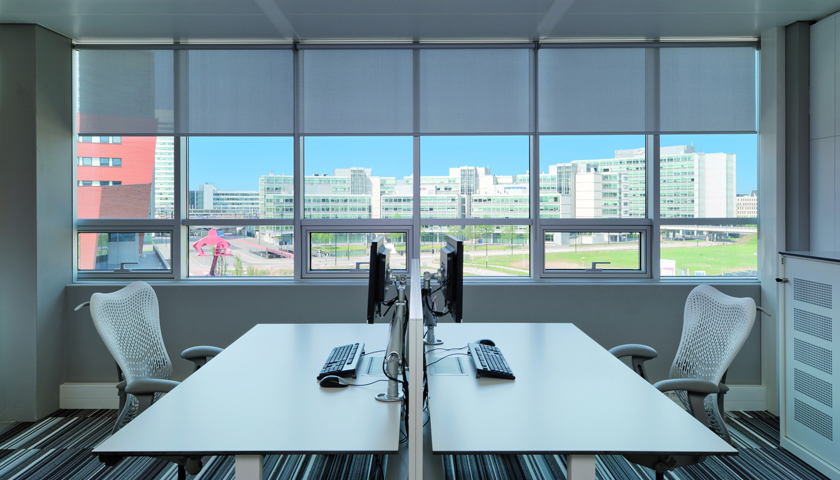It’s down to architects and designers to factor in sun control and light glare when they work on building projects because doing this successfully can improve the interior comfort and energy performance of the premises.
Striking the right balance of sunlight and daylight in a building is crucial to people’s wellbeing, according to a new white paper by architectural products company Hunter Douglas.
However, including blinds at the earliest stage of a building design process can make a huge difference.
While sunlight and daylight are important sources of light and warmth, they can also cause specific problems for workers – for example, an annoying glare on a computer screen or an overheated building.
The challenge for building designers, therefore, is to ensure there is plenty of natural sunlight that does not cause discomfort.
It’s why blinds offer the ideal solution, subject to a building’s location, its façade orientation and the end user’s profile being taken into consideration.
A study by the European Solar Shading Organization (ES-SO) estimates the energy-saving potential of dynamic sun systems could be as much as 30% for cooling and 14% for heating.
Installing blinds is an effective way to prevent glare and ensure visual comfort, with functional roller blinds reducing heat entry by 50-60% cent and light to less than 5%.
There’s no doubt that we want to work in environments that have natural sunlight, and studies have shown that it has a positive effect. In one survey, office workers sitting close to a window received 173% more sunlight than their colleagues sitting further away. Conversely, a lack of daylight and outside views are two of the main contributors to dissatisfaction in the workplace.
Nevertheless, there are times when sunlight has to be shut out and blinds are the most effective way of doing that. In addition to providing a more comfortable working environment, reducing light glare can also help a business to reduce its air conditioning costs, particularly if the building has large east- or west-facing glass surfaces.
You can read the whitepaper here.


